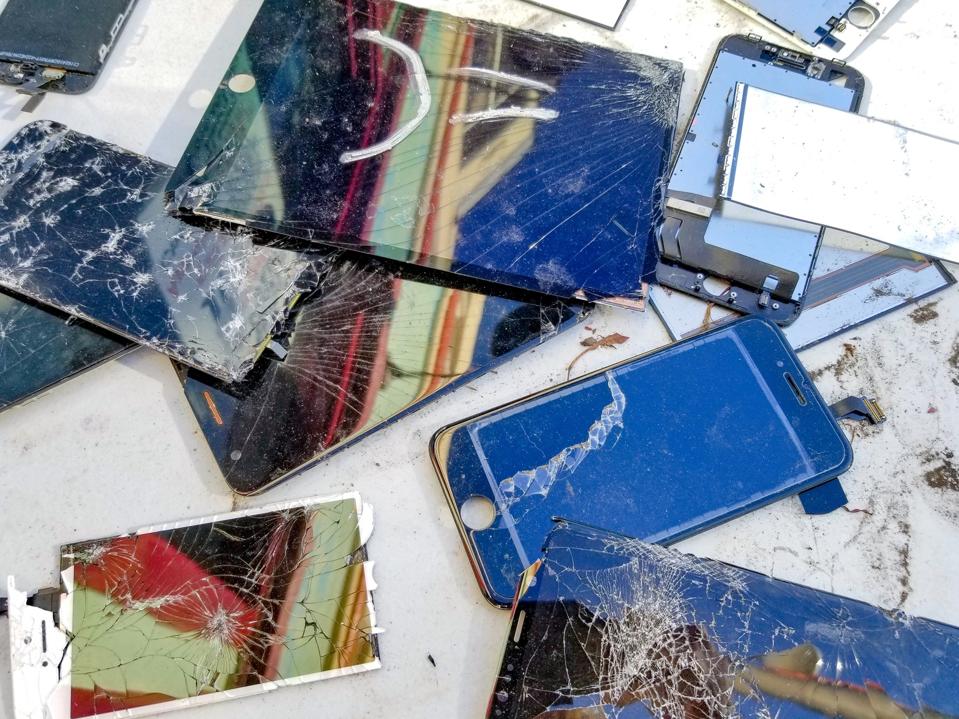Federal researchers are making gains in experiments to ease the process of harvesting recyclable materials in electronic waste from discarded cellphones and computers.
Scientists at two leading national laboratories under the U.S. Department of Energy are pioneering solutions to solve the growing and tedious problem of recycling e-waste.
The Problem of e-waste
“E-waste is one of the fastest growing solid waste streams in the world,” the World Health Organization noted in an October 2024 fact sheet.
Less than one-fourth of the 62 million tonnes of e-waste generated globally in 2022 was verified as being recycled from the millions of broken and obsolete electrical and electronic devices tossed into the trash per year, according to WHO.
“Millions of tonnes of e-waste are recycled using unsound activities, as well as being stored in homes and warehouses, dumped, and illegally exported,” WHO stated. “When e-waste is recycled using unsound activities, it can release up to 1,000 different chemical substances into the environment, including known neurotoxicants such as lead.”
Two New Tactics Discovered at Pacific Northwest National Laboratory
Two new methods developed by Richland, Wash.-based Pacific Northwest National Laboratory scientists may hold the keys for how to better salvage critical minerals in e-waste. Traditional methods are time consuming, require a great deal of energy and involve handling hazardous chemicals.
PNNL is one of the DOE’s top laboratories for scientific discovery and technical innovation in chemistry, data analytics and Earth science. In recent efforts, PNNL materials scientists have been working on how to extract critical minerals such as:
- Dysprosium—used in magnets for hard drives and flash (thumb) drives,
- Neodymium—a component in hard drives, cellphones and televisions, and
- Manganese—in lithium ion batteries.
One project tackled both neodymium and dysprosium. Scientists created a device funneling dissolved e-waste from both substances. Then they used a chemical solution to split and extract both neodymium and dysprosium as purified solids. The new technique was completed in a few hours compared to traditional methods that require as long as a full week to accomplish.
Another PNNL innovation involved a demonstration project that used a gel-based system to dissolve and extract manganese from lithium batteries. This new method is being viewed as a potential solution for how to best recycle cobalt, lithium and nickel from discarded batteries.
Argonne National Laboratory’s New Way to Make, Recycle Electronic Lighting Components
Scientists at Illinois-based Argonne National Laboratory spearheaded a project to make and recycle luminescent polymers in semiconductor materials that light up such electronics as computer screens and car dashboard navigation displays.
ANL is a multidisciplinary science and engineering research center where scientists and engineers work to solve national problems through innovation.
“Recycling this electronic waste is complex, requiring expensive and energy-inefficient processes. Although there is an economic incentive to recycle the key semiconducting materials —in this case, luminescent polymers—there has been no method to achieve this due to the challenge of designing those materials at the molecular level,” PNNL noted when it announced the discovery in July.
ANL led a team that included researchers from the University of Chicago, Purdue University and Yale University to tackle this problem. The solution they found was to create a new type of biodegradable and recyclable luminescent polymers for light-emitting semiconductors. This unique invention includes adding a chemical into the process that enables the e-waste to be broken down under heat or with mild acid for recycling.
“This is a $46 billion-a-year industry, and it is only growing,” Jie Xu, the lead ANL scientist on the project, noted when the discovery was made public. “By 2032 the industry is estimated to grow to $260 billion. With this method, we can eliminate this type of electronic waste that would otherwise be piling up in landfills.”

